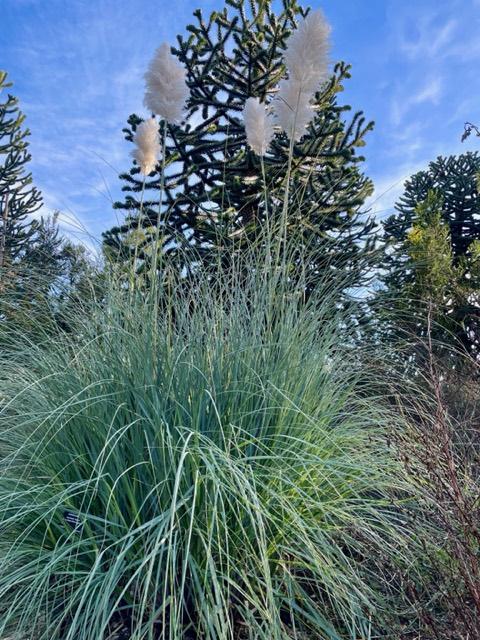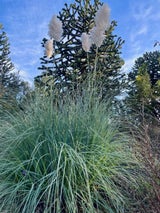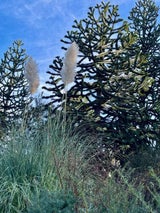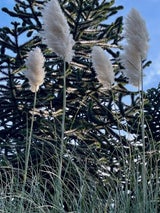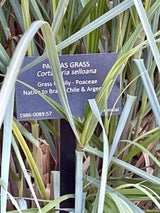- In the Garden
- >
- Gardens
- >
- Gardens R-Z
- >
- Southern Hemisphere Garden
- >
- Cortaderia selloana
Cortaderia selloana
Common name: Pampas grass
Pampas grass (Cortaderia selloana) is dramatic, majestic, and tough. This late-season grass native to Brazil, Chile, and Argentina is not the least bit intimidated growing by our monkey puzzle trees (Araucaria araucana) in the Southern Hemisphere Garden. Just about every part of the monkey puzzle tree has stabbing and cutting armor. While pampas grass has elegant arching blue-silver leaves, its knife-like leaf edges cut deep and draw blood. If you want to cut it down, you’ll need a chainsaw. And if you want to get rid of pampas grass, burning it down won’t work. It still manages to come back.
Like all late-season grasses, pampas grass has the 4-way carbon pathway. This gives it the ability to take in more carbon from the atmosphere, store it and use the carbon without opening its pores. The C4 pathway began millions of years ago during hot cycles on earth. If a plant has to open its pores, it loses precious water in a dry and very hot climate.
When grown as an ornamental grass in hot and dry areas, pampas grass becomes invasive and eventually replaces valuable native plants. No birds or wildlife get food or shelter from this grass. But when you see pampas grass in bloom, you forget the hand slicing and invasive side. Its blue-silver leaves may reach 3 m/9 ft in length. Its silvery white plumes can be as long as 1 m/3 ft. And they sail on stems up to 4m/12 ft. Sky drama and majesty.
The pictures were taken in the Southern Hemisphere Garden in late summer.
Text and photos by Hughie Jones
